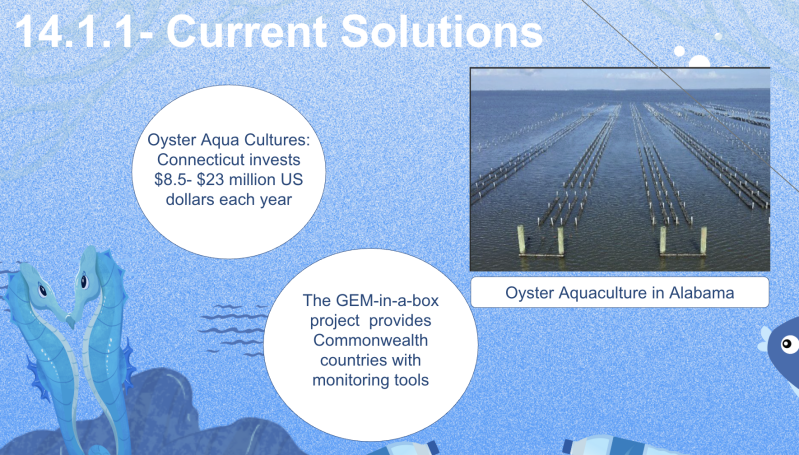
Introduction To Our Goal
Marine pollution represents one of the most pressing environmental challenges of our time, threatening ocean ecosystems, biodiversity, and human health. Sustainable Development Goal 14, "Life Below Water," specifically targets the conservation and sustainable use of marine resources, with target 14.1 aiming to prevent and significantly reduce marine pollution of all kinds by 2025. This project focused on SDG 14.1 and its primary indicator, 14.1.1, which measures the Index of Coastal Eutrophication (ICEP) and floating plastic debris density.


My Role
My role focussed on researching and presenting a comprehensive analysis of the 14.1.1 index. This involved examining the dual components of this indicator: coastal eutrophication—the over-enrichment of coastal waters with nutrients leading to harmful algal blooms and oxygen depletion—and the proliferation of floating plastic debris across ocean surfaces. The task required gathering data from international monitoring agencies, analyzing trends in marine pollution levels across different regions, and understanding the methodologies used to measure and report these indicators.

Through this research, I explored how the 14.1.1 index serves as a critical tool for tracking progress toward cleaner oceans, identifying pollution hotspots, and informing policy interventions. The presentation synthesised complex scientific data into accessible insights, demonstrating the current state of marine pollution globally and highlighting both areas of concern and successful mitigation efforts. This work underscored the urgent need for coordinated international action to protect our ocean ecosystems for future generations.
